Recent Posts
The Importance of Prompt Structural Drying After Water Damage
6/13/2024 (Permalink)
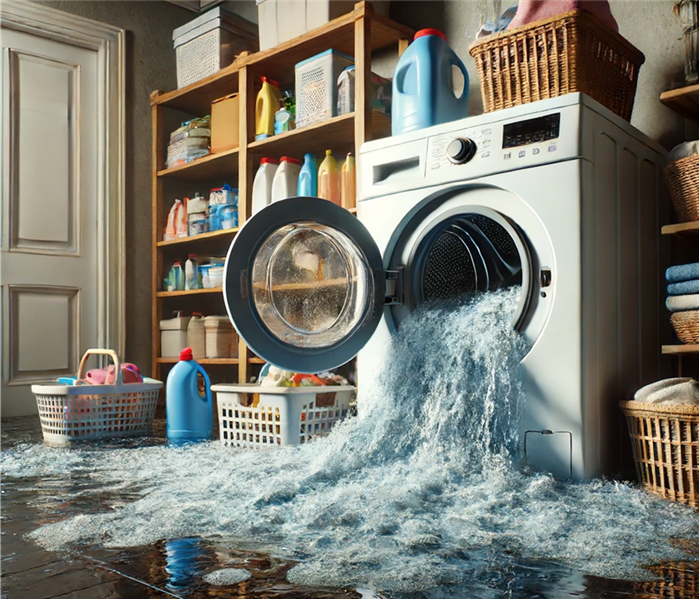 Washing Machine water is grey water damage.
Washing Machine water is grey water damage.
Why Immediate Drying Matters for SERVPRO of Santa Barbara and Santa Ynez/Goleta
Water damage can wreak havoc on your property, especially when it's not addressed quickly. At SERVPRO of Santa Barbara and SERVPRO of Santa Ynez/Goleta, we emphasize the critical need to dry your structure immediately following any water damage, particularly when sewage or gray water is involved. Here's why prompt structural drying is essential.
Types of Water Damage
Understanding the type of water that has infiltrated your home is crucial:
- Clean Water: From sources like broken pipes or rain.
- Gray Water: From appliances such as washing machines and dishwashers, containing some contaminants.
- Black Water: Includes sewage, containing harmful bacteria and pathogens.
Each type requires different handling and urgency, especially gray and black water due to health risks.
Risks of Delayed Drying
1. Health Hazards
- Mold Growth: Mold can begin to grow within 24-48 hours in a damp environment. This is particularly dangerous when gray or black water is involved, as it contains bacteria and can lead to serious respiratory issues.
- Pathogens: Black water contamination can expose you to harmful bacteria, viruses, and parasites, increasing the risk of illness.
2. Structural Damage
- Warping and Rot: Prolonged moisture exposure can lead to warping and rotting of wood and other building materials. This weakens structural integrity and leads to costly repairs.
- Drywall Damage: Drywall can swell and deteriorate when wet, compromising the stability of walls and ceilings.
3. Electrical Hazards
Water damage can pose significant risks to your electrical system, potentially leading to short circuits or even fires if water infiltrates wiring.
The SERVPRO® Approach to Drying
At SERVPRO of Santa Barbara and SERVPRO of Santa Ynez/Goleta, we employ a meticulous drying process to mitigate these risks:
1. Rapid Response
Our teams are available 24/7 to respond swiftly to water damage incidents. Rapid response is critical in preventing further damage and reducing the drying time required.
2. Assessment and Extraction
We begin with a thorough assessment to determine the extent of water damage and the type of water involved. Using state-of-the-art equipment, we extract standing water to prevent further spread.
3. Drying and Dehumidification
- Advanced Equipment: We use industrial-grade dehumidifiers and air movers to ensure complete drying of affected areas. Our technology allows us to monitor moisture levels in walls, floors, and ceilings to guarantee thorough drying.
- Targeted Drying: We focus on hard-to-reach areas that are often overlooked, ensuring no hidden moisture remains.
4. Sanitization
Especially with gray or black water, we perform extensive sanitization to eliminate any contaminants and prevent health risks. This step is crucial for restoring a safe living environment.
Benefits of Prompt Drying
- Prevents Mold Growth: Timely drying stops mold from taking hold, protecting your health and property.
- Minimizes Repair Costs: Quick action reduces the extent of damage, saving on expensive repairs down the line.
- Restores Normalcy: Faster drying means you can return to your normal life sooner, minimizing disruption.
Trust SERVPRO for Professional Water Damage Restoration
When water damage strikes, especially with contaminated water, time is of the essence. SERVPRO of Santa Barbara and SERVPRO of Santa Ynez/Goleta are your trusted partners in efficient and thorough structural drying. Our prompt, professional response helps mitigate risks and restore your property to its pre-damage condition.
Don't wait for water damage to worsen. Contact SERVPRO of Santa Barbara and SERVPRO of Santa Ynez/Goleta immediately for expert water damage restoration and drying services.
What to Do After a Major Fire in Your Restaurant
6/13/2024 (Permalink)
 Commercial kitchens can burst into flams if oil and grease overflow!
Commercial kitchens can burst into flams if oil and grease overflow!
A fire in a restaurant is a devastating experience, impacting not just the physical structure but also your employees, customers, and livelihood. At SERVPRO of Santa Ynez/Goleta and SERVPRO of Santa Barbara, we understand the critical steps needed to recover from such an event and get your business back on its feet. Here's a comprehensive guide on what to do after a major fire in your restaurant.
1. Ensure Safety First
A. Do Not Re-Enter: Even if the fire appears extinguished, the structure might be unstable, and there could be lingering hazards like hot spots or toxic fumes.
B. Consult Authorities: Wait for clearance from the fire department or building inspector before entering the premises. They will determine if it's safe to enter and what precautions to take.
C. Check for Injuries: Ensure all staff and patrons are accounted for and safe. Administer first aid if necessary and call for medical assistance for serious injuries.
2. Notify Your Insurance Company
A. Immediate Contact: Call your insurance company as soon as possible to report the fire. Provide them with preliminary details and follow their guidance on filing a claim.
B. Documentation: Document the damage by taking photos and videos. Keep a record of all communications with your insurer and any expenses related to the fire damage and recovery.
C. Inventory Assessment: Create a detailed inventory of damaged goods, equipment, and fixtures. This will be crucial for your insurance claim.
3. Secure the Premises
A. Board Up Windows and Doors: To prevent further damage from the elements or theft, board up any broken windows and secure doors.
B. Disconnect Utilities: Ensure that all utilities (gas, water, electricity) are turned off to prevent further risks.
C. Install Fencing: Consider erecting temporary fencing to safeguard the site and deter unauthorized access.
4. Engage Professional Restoration Services
A. Contact SERVPRO®: Reach out to SERVPRO of Santa Ynez/Goleta and SERVPRO of Santa Barbara immediately. Our experienced team can quickly assess the damage and begin the restoration process.
B. Comprehensive Assessment: Our technicians will conduct a thorough inspection to evaluate structural damage, water damage from firefighting efforts, and any smoke and soot residue.
C. Specialized Cleaning: We provide deep cleaning and sanitization of your restaurant, including kitchen equipment, dining areas, and ventilation systems.
D. Odor Removal: Our team uses advanced equipment to remove smoke odors, ensuring your restaurant smells fresh and inviting when you reopen.
5. Salvage What You Can
A. Recover Important Documents: Look for important documents like business licenses, employee records, and financial documents. If damaged, SERVPRO offers document drying and restoration services.
B. Assess Usable Equipment: Identify any equipment or furnishings that can be salvaged and restored. Clean and disinfect these items thoroughly.
C. Work with Restoration Experts: Our experts can help determine what can be salvaged and what needs replacement, ensuring the best outcomes for your business.
6. Plan for Rebuilding and Reopening
A. Develop a Recovery Plan: Work with contractors and SERVPRO professionals to create a detailed recovery and rebuilding plan. This should include timelines and budget estimates.
B. Update Your Business Plan: Consider this an opportunity to reassess your business strategy. Update your business plan to reflect any changes or improvements in operations.
C. Communicate with Stakeholders: Keep your employees, suppliers, and customers informed about your recovery progress and expected reopening date.
7. Reflect and Prepare for the Future
A. Review Safety Protocols: Reevaluate your fire safety protocols. Ensure all fire extinguishers, alarms, and suppression systems are up to date and functional.
B. Train Staff: Provide fire safety training to all staff members, ensuring they know how to respond in the event of an emergency.
C. Consider Insurance Updates: Consult with your insurance provider to review your coverage and make necessary adjustments to better protect your business in the future.
Why Choose SERVPRO of Santa Ynez/Goleta and SERVPRO of Santa Barbara?
At SERVPRO of Santa Ynez/Goleta and SERVPRO of Santa Barbara, we offer comprehensive fire restoration services tailored to the unique needs of restaurants. Our team is trained to handle all aspects of fire damage, from smoke odor removal to structural repairs. We're committed to making your disaster "Like it never even happened."
Contact us today for professional, prompt, and compassionate fire damage restoration services. (805) 963-0606
Restoring your restaurant after a major fire can be a daunting task, but with the right approach and professional help, you can rebuild and thrive once again. Stay safe, stay informed, and lean on experts to guide you through the recovery process.
Dealing with a Nasty Sewer Backup in Your Wine Tasting Room: Expert Tips from SERVPRO of Santa Barbara and SERVPRO of Santa Ynez/Goleta
6/13/2024 (Permalink)
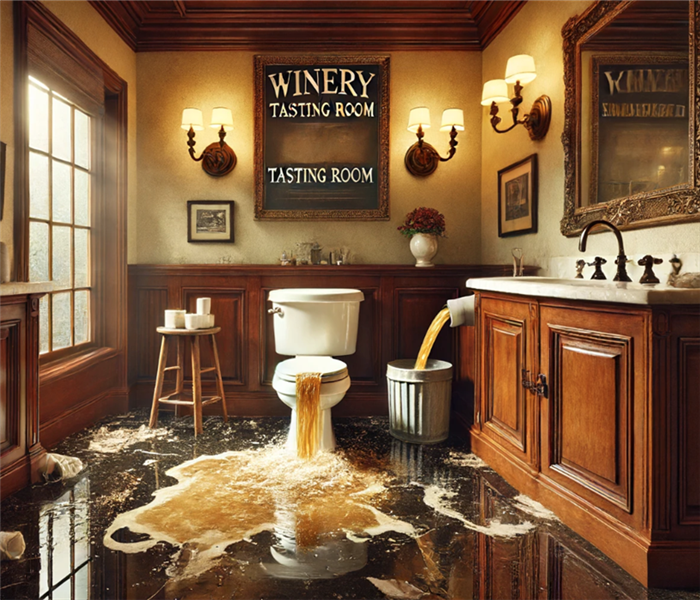 Not a mess for inhouse staff to try and clean up !
Not a mess for inhouse staff to try and clean up !
Introduction
Running a wine tasting room means offering guests a sophisticated and enjoyable experience. However, unexpected emergencies, like a sewer backup, can turn this experience into a nightmare. A sewer backup coming from the toilet not only disrupts your operations but also poses significant health risks. SERVPRO of Santa Barbara and SERVPRO of Santa Ynez/Goleta are here to guide you through the steps to manage and mitigate a sewer backup efficiently, ensuring the safety of your staff and guests.
Immediate Actions to Take
1. Ensure Safety First
Evacuate the Area: Immediately clear the affected area of all guests and staff to prevent exposure to hazardous waste and contamination.
Turn Off Utilities: Shut off the electricity and water supply to the affected area to avoid electrical hazards and prevent further sewage flow.
2. Contain the Spread
Close Off the Area: Use barriers or signs to restrict access to the affected zone. Ensure no one re-enters until it's safe.
Prevent Sewage Spread: Avoid flushing toilets or running water in the facility to prevent the backup from worsening.
3. Contact Professionals
Call SERVPRO®: Reach out to SERVPRO of Santa Barbara or SERVPRO of Santa Ynez/Goleta immediately. Our team of experts is equipped to handle hazardous sewage cleanup efficiently.
Inform Local Authorities: Depending on the severity of the situation, notify local health and safety authorities as required.
Professional Cleanup and Restoration
1. Assessment and Planning
Initial Inspection: SERVPRO professionals will conduct a thorough inspection to assess the extent of the damage and identify the source of the backup.
Develop a Cleanup Plan: We’ll create a tailored plan for your wine tasting room, focusing on safe cleanup, disinfection, and restoration.
2. Sewage Removal and Cleaning
Safe Extraction: Our team uses specialized equipment to safely extract sewage and contaminated water.
Deep Cleaning: We thoroughly clean and disinfect all affected areas using EPA-approved cleaning solutions to eliminate harmful bacteria and pathogens.
3. Drying and Decontamination
Drying the Area: High-powered air movers and dehumidifiers are used to dry the affected area, preventing mold growth.
Odor Removal: Advanced odor removal techniques and equipment ensure your tasting room is free from any unpleasant smells.
Preventative Measures
1. Regular Maintenance
Inspect Plumbing: Schedule regular inspections of your plumbing system to catch potential issues early.
Install Backflow Preventers: Consider installing backflow preventers to reduce the risk of future sewer backups.
2. Staff Training
Educate Staff: Train your staff on how to recognize early signs of plumbing issues and how to respond in case of an emergency.
Create a Response Plan: Develop and implement an emergency response plan outlining steps to take in the event of a sewer backup.
Conclusion
A sewer backup can be a daunting challenge for any wine tasting room, but quick and effective action can mitigate damage and ensure the safety of your guests and staff. Trust SERVPRO of Santa Barbara and SERVPRO of Santa Ynez/Goleta to handle the cleanup and restoration, allowing you to focus on what you do best—offering a memorable wine tasting experience. Contact us today for expert assistance in any emergency or to learn more about preventative measures for your facility.
For immediate assistance, call SERVPRO of Santa Barbara & SERVPRO of Santa Ynez/Goleta at (805) 963-0606
Serving Santa Barbara, Santa Ynez, and Goleta with pride and dedication, we are here to help you maintain a safe and welcoming environment for all your guests.
Anywhere and Everywhere
6/5/2024 (Permalink)
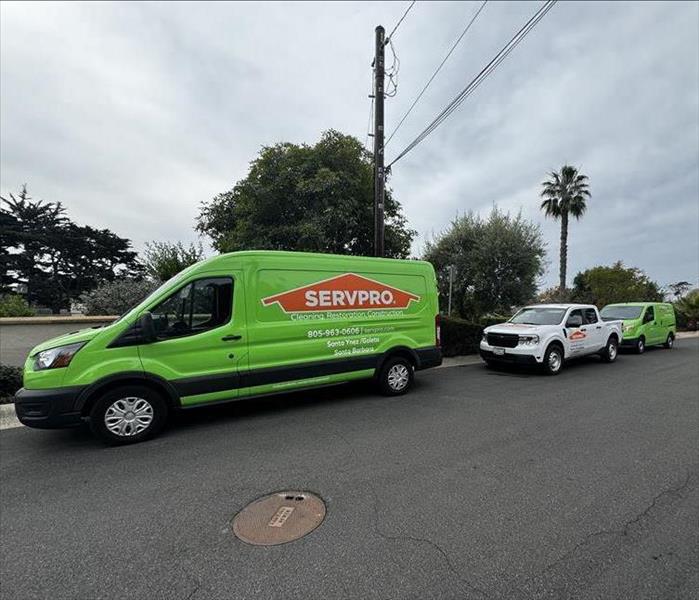 SERVPRO® storm travel
SERVPRO® storm travel
SERVPRO of Santa Barbara and Santa Ynez: Local Heroes, National Responders
Introduction
When disaster strikes, it’s often the unsung heroes who make the biggest difference. SERVPRO of Santa Barbara and SERVPRO of Santa Ynez are prime examples of local teams with a national impact, stepping up to assist during catastrophic events such as hurricanes, major freezes, and floods. With hundreds of SERVPRO® teams across the country ready to mobilize, these franchises play a crucial role in both local and nationwide disaster recovery efforts.
The Role of SERVPRO in National Disasters
SERVPRO is renowned for its robust response during storm events. The coordinated efforts of the SERVPRO® Extreme Teams and Storm Teams enable a swift and effective response, ensuring that homeowners and businesses can quickly return to normalcy. The extensive network of SERVPRO franchises means that when disaster strikes, help is never far away.
SERVPRO of Santa Barbara and Santa Ynez: Leading by Example
Over the past decade, SERVPRO of Santa Barbara has demonstrated its commitment to disaster recovery by traveling to some of the hardest-hit areas in the country. Their dedication has taken them to Kansas, Louisiana, North Carolina, Florida, Texas, Alabama, and Minneapolis. One of their most significant deployments was in the aftermath of Hurricane Ida, where they spent three months assisting in the New Orleans area. The impact of the hurricane, with 150 MPH winds, severely affected areas such as Metairie, Downtown, and the Garden District.
During their time in Louisiana, the team from Santa Barbara was able to secure the necessary local contractors license for mold remediation, residential, and commercial services, thanks to a reciprocity program with the California Contractors State License Board (CSLB). This flexibility highlights SERVPRO’s ability to adapt and meet local regulations, ensuring that their services are both effective and compliant.
Training and Experience: The SERVPRO Advantage
One of the key advantages of being part of the SERVPRO network is the opportunity for employees to gain extensive experience in a short period. High-volume storm work provides invaluable training, allowing SERVPRO employees to handle a wide range of disaster scenarios, from ice dam freezes to hurricanes, flooding, and tornadoes. This experience is critical in building a workforce that is capable, confident, and ready to tackle any challenge.
A Trusted Name in Disaster Recovery
The SERVPRO® name is trusted across North America, and for good reason. With 2,200 franchises serving the continent, SERVPRO’s ability to scale up during major disasters is unmatched. More importantly, the local SERVPRO teams remain available long after the national teams have returned home, ensuring continued support and recovery for affected communities.
Conclusion
SERVPRO of Santa Barbara and SERVPRO of Santa Ynez exemplify the spirit of community and resilience. Their commitment to both local and national disaster recovery efforts underscores the importance of having a reliable and experienced team ready to respond when it matters most. Whether it’s battling the aftermath of a hurricane or addressing the damages from a severe freeze, SERVPRO stands as a beacon of hope and restoration, helping people rebuild their lives one step at a time.
SERVPRO of Santa Ynez/Goleta: Expert Mold Remediation Services
6/5/2024 (Permalink)
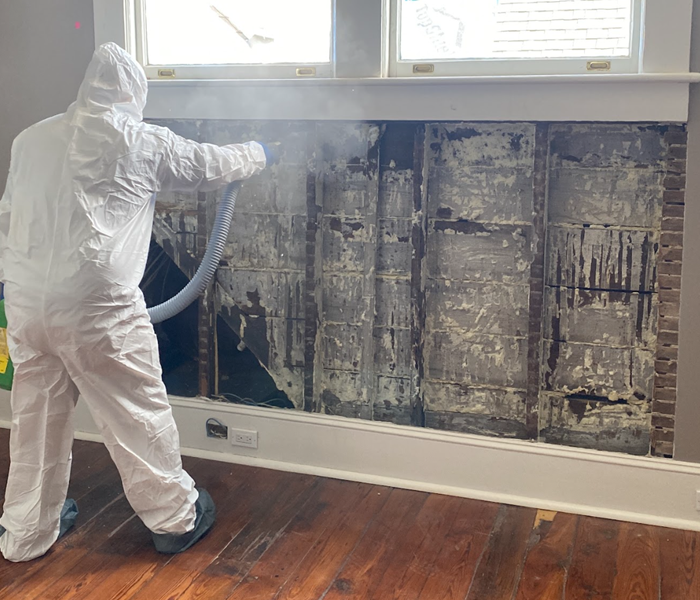 SERVPRO® applying antimicrobial
SERVPRO® applying antimicrobial
At SERVPRO of Santa Ynez/Goleta, we pride ourselves on our extensive experience in mold remediation. Our team is meticulous and dedicated, ensuring clear communication with homeowners, property managers, and third-party testing companies to achieve successful remediation and restore normalcy.
Addressing the source of moisture intrusion is crucial, as mold can quickly reestablish itself if building materials become wet again. Mold is ubiquitous, but the goal is to prevent high indoor levels. Common culprits of indoor mold issues include leaky pipes, windows, roofs, skylights, exterior elevation problems (such as when landscaping accumulates and rises above the building), crawl space water intrusion, and insufficient crawl space ventilation.
Regular home maintenance is essential to prevent water damage, which can lead to mold growth and eventual structural damage. At SERVPRO of Santa Ynez/Goleta, we are committed to helping you maintain a safe and healthy living environment.
Navigating Fire Damage Cleanup: Tips from SERVPRO of Santa Ynez and Goleta
1/3/2024 (Permalink)
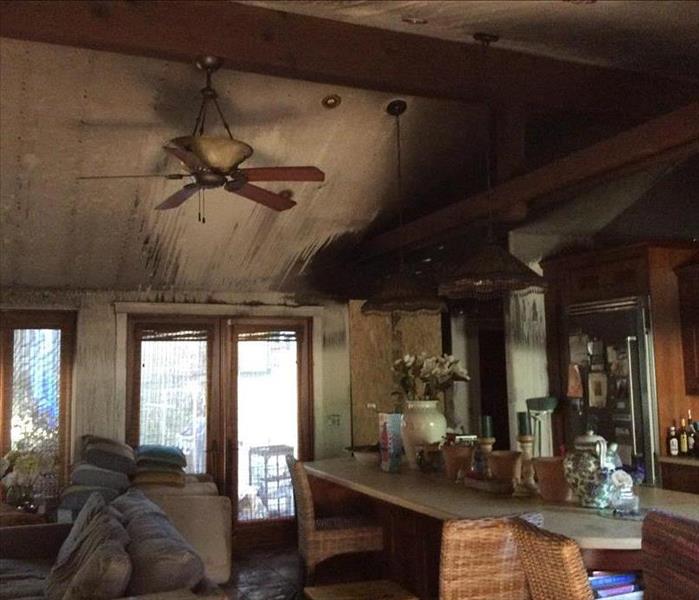 Fire damage is devastating and overwhelming !
Fire damage is devastating and overwhelming !
Introduction:Experiencing fire damage in your home or business can be overwhelming. It's a time filled with uncertainty, stress, and a lot of questions. What should you do immediately after the fire? How can you minimize further damage? And importantly, who do you trust to restore your property? As SERVPRO of Santa Ynez and Goleta, we specialize in fire damage cleanup and restoration, and we're here to guide you through this challenging time. Remember, while we collaborate closely with your insurance carrier, we work for you, the customer, not the insurance company.
What to Do After a Fire:
- Safety First: Before re-entering your property, ensure it's safe. Wait for a go-ahead from the fire department.
- Document the Damage: Take photos and videos of the damage for insurance purposes.
- Secure Your Property: To prevent further damage, consider boarding up windows and doors.
- Contact Your Insurance: Notify your insurance company about the fire. They'll guide you on the next steps and documentation required.
- Call the Professionals: Contact SERVPRO of Santa Ynez and Goleta. We have the expertise and equipment to handle fire damage effectively.
What Not to Do After a Fire:
- Don’t Enter a Damaged Property: Structural damage can be hazardous. Wait until professionals say it's safe.
- Avoid Washing Walls or Carpet: Improper cleaning can cause further damage. Leave this to the professionals.
- Don’t Use Electrical Appliances: After a fire, electrical systems can be dangerous. Wait for an inspection.
- Don’t Eat Leftover Food: Heat, smoke, and soot can contaminate food items.
- Avoid DIY Repairs: DIY efforts can exacerbate the damage. Trust professional restoration services.
Working With Your Insurance:
At SERVPRO of Santa Ynez and Goleta, we understand the importance of working with your insurance carrier. However, our primary commitment is to you, the homeowner or business owner. We'll provide a comprehensive assessment of the damage, an honest and transparent restoration plan, and we'll communicate directly with your insurance to ensure your claim is handled smoothly. But, our loyalty lies with you. Our goal is to restore your property to its pre-fire condition while prioritizing your needs and concerns.
Conclusion:
Dealing with fire damage can be daunting, but you're not alone. SERVPRO of Santa Ynez and Goleta is here to help every step of the way. From initial cleanup to final restoration, we ensure that your property is treated with care and professionalism. Remember, while we work with your insurance, we work for you. For more information or assistance, please contact us. Let's get your property and life back to normal as quickly and seamlessly as possible.
Dealing with Fire Damage: Expert Guidance from SERVPRO of Santa Barbara
1/3/2024 (Permalink)
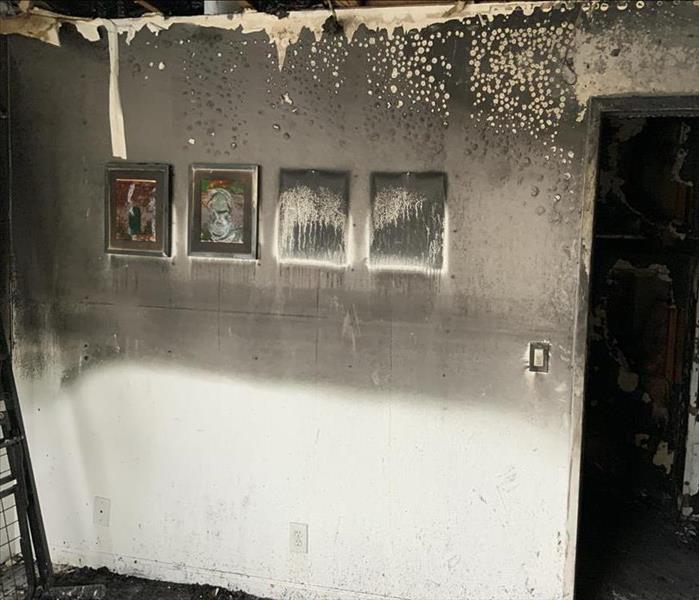 Fire is devastating on every level SERVPRO is here to help.
Fire is devastating on every level SERVPRO is here to help.
Fire damage can be a devastating experience, leaving homeowners feeling overwhelmed and uncertain about the next steps. At SERVPRO of Santa Barbara, we understand the challenges you face and are dedicated to helping you navigate the complexities of fire damage restoration, insurance claims, and local permitting processes. Remember, we work for you, the customer, not the insurance carrier.
Step 1: Immediate Response and Assessment The first step in dealing with fire damage is to ensure your safety and the safety of your family. Once the fire department has cleared your property, contact SERVPRO of Santa Barbara. Our team of experts will quickly assess the damage and provide a clear, comprehensive plan for restoration.
Step 2: Dealing with Insurance Navigating insurance claims can be daunting. At SERVPRO of Santa Barbara, we have extensive experience working with insurance companies and can guide you through the process. Our goal is to ensure you receive the coverage you're entitled to. We advocate on your behalf, ensuring that your interests are represented.
Step 3: Restoration and Cleanup Our team specializes in fire damage restoration. We handle everything from soot and smoke removal to structural repairs. Using state-of-the-art equipment and techniques, we work diligently to restore your property to its pre-fire condition.
Step 4: City and County Permitting Dealing with city and county permitting can be complicated, especially after a fire. Our knowledge of local regulations and requirements ensures that all restoration work complies with the necessary codes and standards. We will help with the permitting process.
Step 5: Personalized Support and Communication Throughout the entire process, we maintain open and transparent communication. We understand that this is a challenging time for you and your family, and we are committed to providing support every step of the way.
Conclusion: At SERVPRO of Santa Barbara, we're not just restoring properties; we're restoring peace of mind. Fire damage can be overwhelming, but you don't have to face it alone. With our expertise in restoration, insurance advocacy, and local permitting, we ensure a smoother, more manageable recovery process. Remember, we work for you, not the insurance carrier. Contact us today for expert assistance with fire damage.
What to Do After a Fire: SERVPRO of Santa Barbara and Santa Ynez/Goleta is Here to Help
1/3/2024 (Permalink)
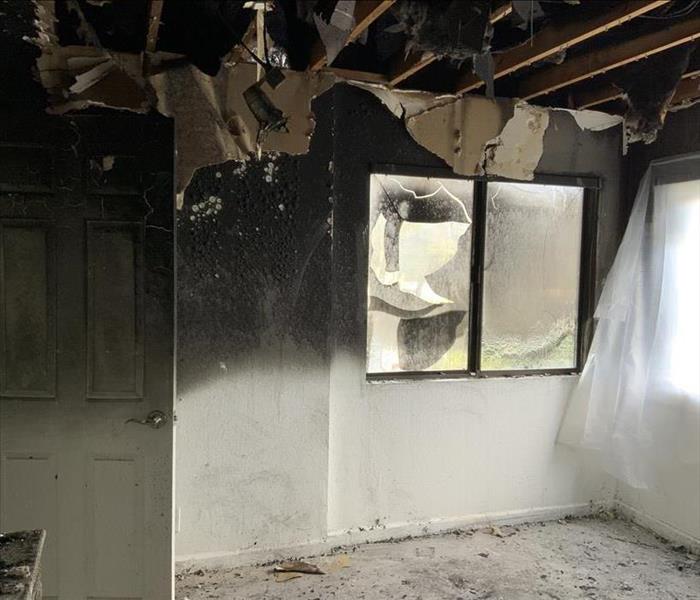 Fire damage is extremely overwhelming and stressful SERVPRO is here to help in every way possible
Fire damage is extremely overwhelming and stressful SERVPRO is here to help in every way possible
Rebuilding and Moving Forward
Experiencing a fire in your home or business can be overwhelming and devastating. The aftermath often leaves property owners in a state of confusion, wondering what to do next. Here at SERVPRO of Santa Barbara and Santa Ynez/Goleta, we understand the emotional and physical toll a fire can take. Our goal is to help restore your property to its beautiful condition, allowing you to move back in and focus on the more important things in life.
Immediate Steps Post-Fire
Safety First: Ensure that it's safe to enter your property. Always wait for the go-ahead from fire services.
Contact Your Insurance Company: Inform your insurance provider about the fire. They will guide you through the process of filing a claim.
Document the Damage: Take photographs and make a list of damaged items. This will be crucial for insurance claims.
Secure the Property: To prevent further damage, ensure your property is secure. This might involve boarding up windows and doors.
How SERVPRO Can Assist
Assessment and Planning: Our team will conduct a thorough assessment of the damage and create a tailored plan for restoration.
Water Removal and Drying: If there's water damage from firefighting efforts, we’ll promptly remove the water and dry the area.
Soot and Smoke Removal: We use specialized equipment and techniques to remove soot and smoke from ceilings, walls, and other surfaces.
Cleaning and Sanitizing: Our professionals will clean, sanitize, and disinfect all of the restorable items and structures damaged by the fire.
Restoration: The final step is restoring your home or business to its pre-fire condition. This process may involve minor repairs, such as painting and installing new carpet, or it may entail major repairs, such as the reconstruction of various areas or rooms.
Moving Back In and Moving On
Once the restoration process is complete, it’s time to move back into your space. We understand that getting your life or business back to normal is your priority. Our team works efficiently and compassionately to ensure you can do just that. We handle the heavy lifting of restoration so you can focus on healing and moving forward.
Embracing the Future
A fire doesn't have to mean the end of your cherished home or valued business. With SERVPRO of Santa Barbara and Santa Ynez/Goleta by your side, you can face the future with confidence, knowing that your property is in skilled and caring hands. Let us help you rebuild, restore, and renew your space.
Remember, in the face of disaster, you are not alone. SERVPRO of Santa Barbara and Santa Ynez/Goleta is here to ensure that your post-fire journey is as smooth and stress-free as possible. Contact us today, and let's work together to bring your property back to its former glory.
Creating Your Dream Space with SERVPRO of Santa Barbara and Santa Ynez
1/3/2024 (Permalink)
 Dream kitchen in it's final stages
Dream kitchen in it's final stages
Beyond Disaster Recovery: Expertise in Construction and Remodeling
When you think of SERVPRO®, you likely envision a trusted leader in disaster recovery, adept at restoring homes and businesses following fires or floods. However, SERVPRO of Santa Barbara and SERVPRO of Santa Ynez are more than just disaster response specialists. We're also your go-to experts for construction and remodeling services. You don't need a calamity to experience our exceptional work - we're here to bring your dream kitchen or additional dwelling unit (ADU) to life!
Tailored Remodeling Solutions
Our team understands that remodeling is not just about repairing or rebuilding - it's about realizing your vision for a perfect living or working space. Whether it's a sleek, modern kitchen remodel or adding an ADU for extra space, our expertise ensures your project is handled with the utmost care and professionalism.
Dream Kitchens Come to Life
Your kitchen is more than a place to cook; it's the heart of your home, where memories are made. Our skilled team works with you to transform your kitchen into a space that reflects your style and meets your functional needs. From state-of-the-art appliances to custom cabinetry and elegant countertops, we take care of every detail.
ADU Addition: Expand Your Living Space
Adding an ADU is an excellent way to extend your living space. Whether you're looking for a guest house, a rental opportunity, or just extra room for your growing family, our team has the experience to deliver a seamless addition to your home. We ensure that the new structure complements your existing home's style and is built to the highest standards.
Collaborative Approach
At SERVPRO of Santa Barbara and Santa Ynez, collaboration is key. We work closely with your architect and interior designer to ensure that every aspect of your project aligns with your vision. Our team brings a wealth of experience and a keen eye for detail, ensuring that the final result is not just satisfactory, but extraordinary.
Why Choose SERVPRO?
- Expertise: With years of experience in both disaster recovery and construction, we bring unparalleled expertise to your remodeling project.
- Quality Workmanship: Our commitment to quality means we use only the best materials and techniques.
- Customer-Centric Approach: We prioritize your needs and preferences, ensuring a personalized experience.
- Seamless Integration: We ensure that new additions blend seamlessly with your existing structures.
- Full-Service Solution: From initial consultation to final touches, we handle every aspect of your project.
Ready to Transform Your Space?
If you're ready to embark on a remodeling journey, or if you're curious about what we can do for your space, don't hesitate to reach out. Call SERVPRO of Santa Barbara and SERVPRO of Santa Ynez for an estimate. Let us work alongside your architect and interior designer to turn your dream into reality. Remember, you don't need a disaster to benefit from our services - we're here to enhance and transform your living and working environments, one dream project at a time.
Elevate Your Space with SERVPRO of Santa Barbara and Santa Ynez
1/3/2024 (Permalink)
 Rebuilt Kitchen painted cabinets and new floor
Rebuilt Kitchen painted cabinets and new floor
More Than Disaster Recovery: We Bring Your Dream Projects to Life
Think of SERVPRO® not just for disaster recovery, but for expert construction and remodeling too. At SERVPRO of Santa Barbara and Santa Ynez, we're equipped to transform your home or business, whether it's crafting your dream kitchen or adding an elegant ADU.
Custom Remodeling Services
Our team excels in turning your vision into reality. From modern kitchen overhauls to seamless ADU additions, we prioritize your style and needs, ensuring every project reflects your personal touch.
Collaborative Excellence
We work closely with your architects and interior designers, blending your ideas with our expertise for a perfect finish. Our comprehensive approach guarantees a smooth, satisfying remodeling experience.
Why Choose Us?
- Expertise & Quality: Years of experience and commitment to excellence.
- Customer Focus: Tailoring every project to your unique vision.
- Seamless Integration: Ensuring new additions complement your space.
Let's Start Your Project!
Ready for a transformation? Contact SERVPRO of Santa Barbara and Santa Ynez for an estimate. Let's collaborate to make your dream space a reality – no disaster needed!






 24/7 Emergency Service
24/7 Emergency Service



